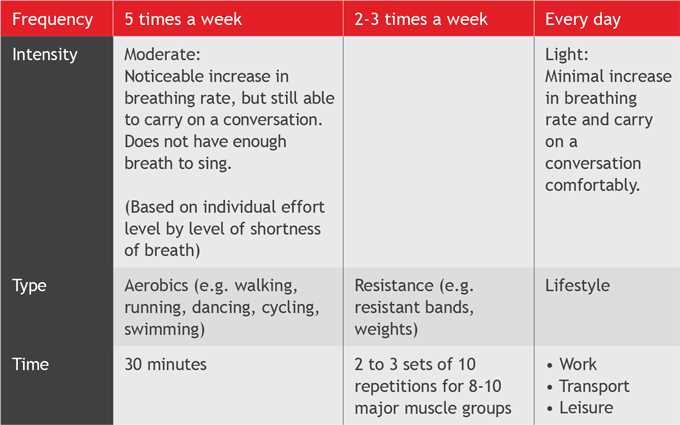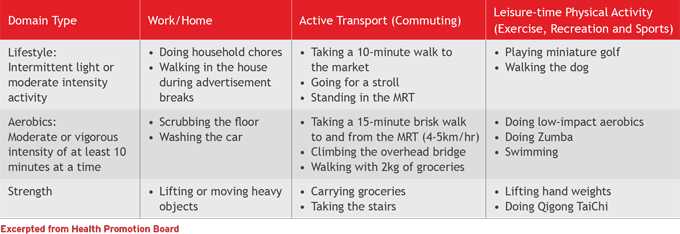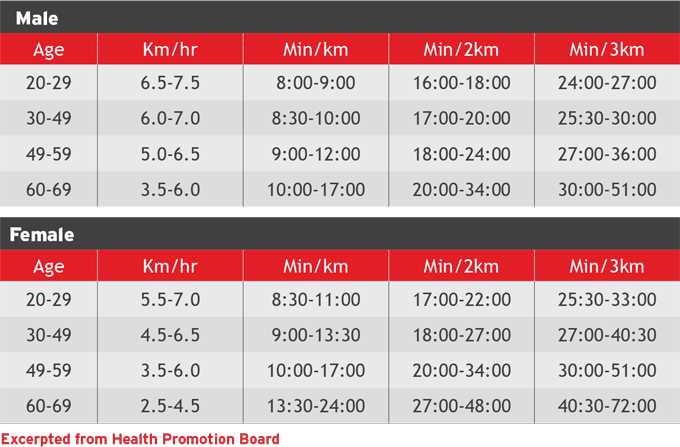Regular physical activity is crucial in preventing and managing lifestyle-related diseases and heart disease. An ideal physical programme should include both aerobic, resistance and lifestyle-related activities to improve endurance and strength training. Physical activity prescription should be tailored according to age, physical fitness and gradual progression for sedentary adults.
According to the Ministry of Health, one third of Singaporean deaths in 2011 and 2012 were due to heart-related conditions. 10% of total hospital admissions in these two years were linked to heart disease and 40% of polyclinics’ attendances were due to risk factors of heart disease (e.g. hyperlipidemia, hypertension and diabetes mellitus). These statistics demonstrate the rising healthcare burden of heart disease in Singapore.
The heart is the engine of the human body; it ensures consistent and continuous delivery of oxygen and nutrients to our body tissues. Optimum heart function is essential to ensure health and vitality. This can be optimised through regular and sufficient doses of physical activity.
Today, there is an increasing trend of reduced physical activity due to mechanisation. Living a sedentary lifestyle has been associated with increased risks of chronic diseases, cancers, obesity, accelerated functional deterioration and lower life expectancy. Strong evidence has supported the risk of developing both heart disease and early death from occupations that are less active.
The 2010 National Health Survey demonstrated that 39.1% did not meet physical activity guidelines for healthy living. Therefore, physical inactivity is an avoidable risk factor for heart disease.
Types of Physical Activity
Although increasing activity levels have obvious benefits, getting people to participate can be challenging. There are many barriers – on the personal level through external factors and other environmental factors that affect adherence to regular physical activity. In addition, there is lack of understanding on the types and dosage of physical activity in reaping real health benefits. It is usual to assume that any form of physical activity is considered sufficient for health promotion.
Physical activity is defined as any body movement produced by muscle contractions that result in the burning of calories. In contrast, exercise is a purposeful physical activity programme to ensure gains or maintenance in physical function and fitness (e.g. running, walking, dancing, swimming).
Exercise programmes can be divided into aerobic and resistance physical activities. Aerobic exercises help in improving endurance and fitness, while resistance exercises help in loading and strengthening both bones and muscles strength.
In order to maximise benefits from incidental physical activity, a new modality, which is ‘lifestyle physical activity', was formulated to acknowledge the role of these activities. Local guidelines of physical activity have an inclusive model for various types of physical activity to improve adherence to regular physical activity.
Screening and Readiness for Physical Activity
Before prescribing exercise, it is important to screen for red flags for risks of participation in physical activity. Physical activity readiness questionnaire (PAR-Q) is a readily accessible tool to address risks. Further assessment may be required for any “yes” to the questionnaire as well as supervision of exercise intensity and progression. After assessing risks, physical activity prescription is made through the Frequency, Intensity, Type and Time (FITT) principle.
Physical Activity Prescription
Physical activity prescription is based on FITT principle. A sample of a complete simulated physical activity prescription should include both aerobic, resistance and lifestyle-related activities (as shown in the table below). Ideal frequency of physical activity should be at least five times a week at moderate intensity level for aerobic-based activity for 30 minutes. Resistance based exercises should be done at least 2 to 3 times a week in a few sets of 10, for major muscle groups.

Below table shows a simulated physical activity prescription.

Walking is a great form of exercise through everyday physical activity. It is readily accessible, does not require equipment and has low health risks. Walking intensity can be gradually built up, according to the physical capacity of each individual. Walking is beneficial for all ages to increase mobility and strength, while reducing the risks of disability and chronic diseases. The table below provides a set of recommended walking speeds for males and females of different age groups.

Walk at a comfortable pace for a few minutes to warm up before progressing to the ideal speed suitable for your age; maintain the speed for 30 minutes before cooling down to a slower speed. For sedentary adults or individuals with joint pains and injuries, it would be preferable to start at a slower pace in short bouts of 10 minutes before progressing to an ideal duration of 30 minutes.
By Cindy Soh, Principal Physiotherapist
Department of Physiology, Tan Tock Seng Hospital
This article first appeared in the July - September 2014 issue of GP BUZZ, a publication by Tan Tock Seng Hospital.